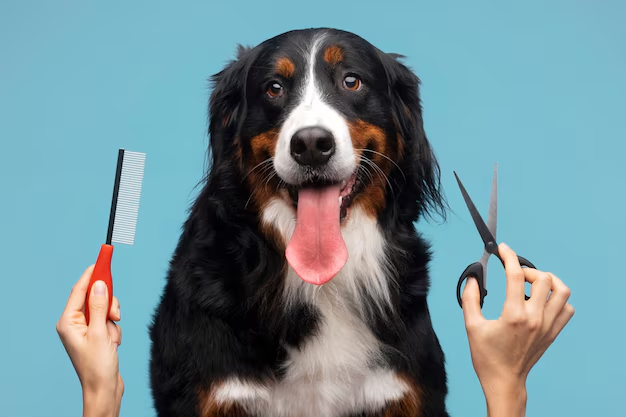Are you looking for tips on how to groom your pet or perhaps looking for professional pet training services and do not want to visit Any Pet Store? I can help with both! Let me know what you’re specifically interested in.
Absolutely, pets are like family! They rely on us for everything—love, attention, and proper care. Just like children, they need regular grooming, a balanced diet, and lots of playtime to stay healthy and happy and that is the reason there are so many Pet Salon and Pet care services are available in the market.
Pet grooming is an important part of maintaining your pet’s health and well-being. Here are some helpful tips for grooming your pet:
1. Brush Regularly
- Dogs: Depending on the breed, brush your dog a few times a week to prevent matting, tangles, and hair loss. Long-haired dogs require more frequent brushing, while short-haired dogs only need occasional brushing.
- Cats: Even short-haired cats can benefit from regular brushing to reduce shedding and hairballs. Long-haired cats need daily grooming to prevent mats.
- Check for pests: While brushing, look out for fleas, ticks, or any skin irritations.
2. Bathe Your Pet Properly
- Dogs: Dogs typically need to be bathed every 4 to 6 weeks, unless they get into something dirty. Use pet-friendly shampoos to avoid skin irritation.
- Cats: Cats groom themselves and usually don’t need baths. If your cat needs one, use a mild pet shampoo and avoid getting water in their ears or eyes.
- Drying: After the bath, dry your pet with a towel. Some pets might tolerate a blow dryer, but use it on a low, cool setting to prevent burns.
3. Nail Trimming
- Frequency: Trim your pet’s nails every 3-4 weeks to prevent them from becoming too long or painful.
- Use the right tools: Make sure you’re using pet-specific nail clippers. Be careful not to cut too close to the quick (the sensitive part of the nail), as it can cause bleeding.
- Calm your pet: Try to keep your pet calm while trimming. You can reward them with treats or praise after each successful trim.
4. Ear Cleaning
- Dogs and Cats: Check your pet’s ears regularly for wax buildup, dirt, or signs of infection like redness or odor. Use a vet-approved ear cleaner and cotton balls to gently wipe the ear canal.
- Avoid Q-tips: Never insert anything into the ear canal; it can cause damage to the ear drum.
5. Teeth Brushing
- Dogs and Cats: Oral hygiene is important to prevent bad breath, gum disease, and tooth loss. Use a pet toothbrush and toothpaste to brush your pet’s teeth a few times a week.
- Dental chews: Dental chews and toys can also help reduce plaque buildup.
6. Check for Skin Issues
- While grooming, keep an eye out for lumps, bumps, rashes, hot spots, or dry patches that might need a vet’s attention. Regular grooming helps you catch skin issues early.
7. Use the Right Tools
- Brushes: Select a brush suitable for your pet’s coat type (slicker brushes for long hair, bristle brushes for short hair).
- Clippers/Trimmers: If you’re trimming your pet’s hair, use clippers designed for pets. Always be gentle and use them slowly to avoid cuts.
8. Maintain Regular Grooming Sessions
- Regular grooming helps your pet get used to the process and builds trust. It also gives you a chance to bond and check for any health problems.
9. Professional Grooming
- Some pets, especially those with thick or long coats, may benefit from professional grooming. It can also be a good idea for specific services like nail trimming, ear cleaning, or specialized cuts.
By staying consistent with these grooming habits, your pet will be healthier, happier, and more comfortable! If you’re ever unsure about how to groom your pet properly or about a specific technique, a professional groomer or vet can always offer advice.
If you want us to help you for Pampering your Pet, Please leave your Details below.


